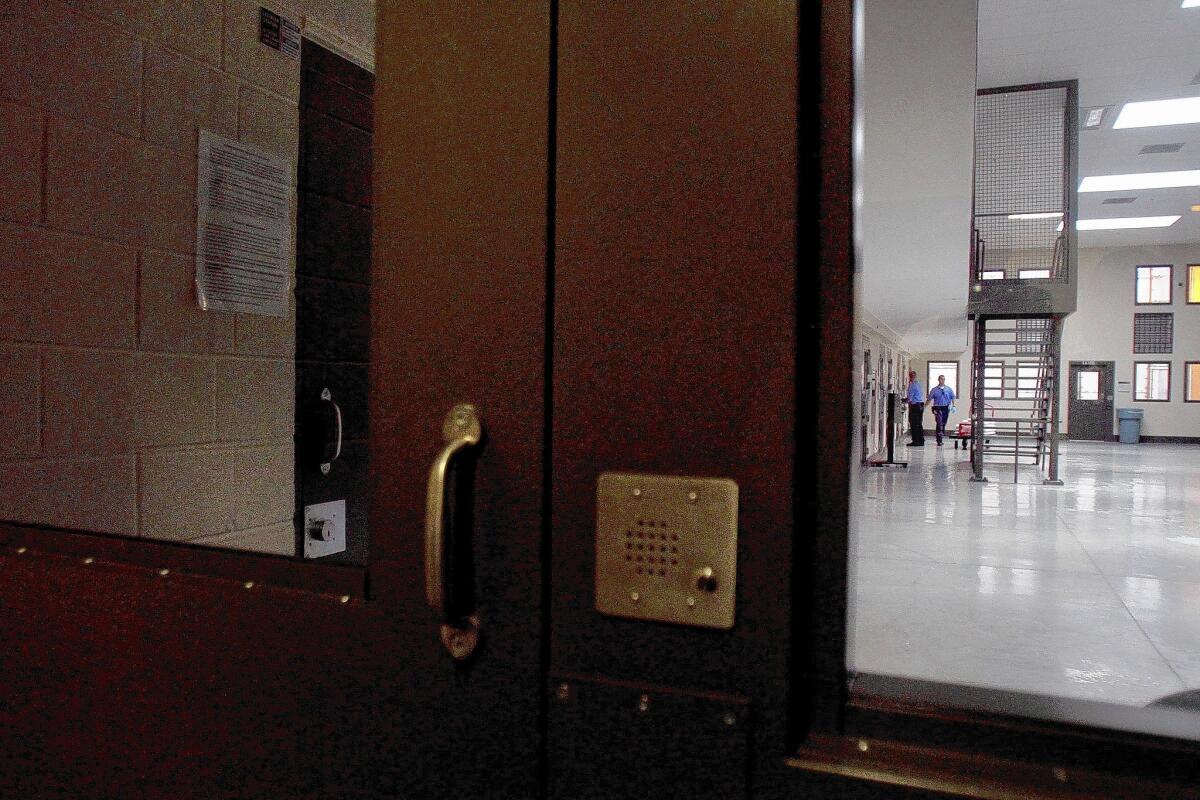Dozens of asylum-seeking immigrants stop eating to protest detention

Californiaâs largest immigrant detention center, a privately run facility in Adelanto, is seen in 2013. Several asylum-seekers detained there launched a hunger strike this week to protest prolonged detention.
Dozens of immigrant detainees in California and other states have launched hunger strikes in recent days to protest what they describe as prolonged detention.
The protests at several immigrant detention centers, including three in California, are the latest in a string of detainee hunger strikes that began in October.
Most of those refusing meals are asylum-seekers from South Asia or Africa who have been held in detention for months or years while their cases are decided in immigration courts. Fahd Ahmed, an immigrant advocate who helped coordinate the strikes, said the detainees should be set free on parole on reasonably priced bonds.
âThe fact that they have not been released after as much as two years in detention is a failure of the immigration system,â said Ahmed, executive director of Desis Rising Up & Moving, a group that advocates for South Asian immigrants.
Ahmed also said many detainees have a difficult time collecting paperwork and testimony for their cases when theyâre behind bars. âYou canât prepare evidence for a good case while youâre locked up,â he said.
Under law, detainees who spend more than six months in detention must be given bond hearings before an immigration judge. ICE and the immigration court system consider a variety of factors when deciding whether to release immigrants from detention, including their flight risk, their criminal history and whether they have U.S. ties.
Most of the hunger strikers stopped eating a week ago, Ahmed said.
A U.S. Immigration and Customs Enforcement official who was not authorized to speak on the record confirmed that the men on strike include 35 detainees at the Theo Lacy Immigration Detention Facility in Orange and 13 at the Otay Mesa Detention Center in San Diego.
The official also said 44 detainees at the Etowah Detention Center in Gadsden, Ala., were refusing to eat.
Ahmed said detainees at several other facilities, including Californiaâs largest immigrant detention center in the high desert city of Adelanto, joined the hunger strike on Monday. It is ICEâs policy not to recognize a hunger strike until detainees have refused food for at least 72 hours.
According to the agencyâs protocol, detainees who are engaged in hunger strikes are weighed and their vital signs are taken daily. In previous cases, federal judges have ordered the agency to force-feed striking detainees.
Early last month, 26 asylum-seekers at the Adelanto Detention Center launched a hunger strike that lasted nearly two weeks.
The group â which included a man fleeing anti-gay laws in Ghana and others escaping religious and political persecution in Pakistan, Nepal and Bangladesh â started eating after one of the protesters collapsed.
Ahmed said the current strike at Adelanto is made up of men from that group.
Twitter: @katelinthicum
More to Read
Sign up for Essential California
The most important California stories and recommendations in your inbox every morning.
You may occasionally receive promotional content from the Los Angeles Times.











